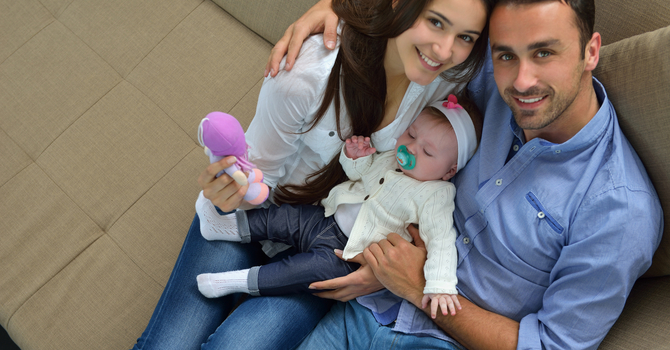Forward Head Posture
What is Forward Head Posture?
Forward head posture is a postural distortion pattern of the head and neck. When your head goes forward into anterior translation or forward flexion the amount of pressure on the neck and shoulders increases.
Did you know that when you bend your neck forward at varying angles the amount of pressure on the neck multiplies? When the head is in a neutral position it weighs approximately 10-12 pounds. When you look down at a 15-degree angle the amount of weight increases to 27pounds. The further your head goes forward into flexion, the more pressure there is on the neck.
When you look down at your smartphone at a 60-degree angle, it can add up to 60 pounds of pressure to your neck and shoulders!
You can have a friend check to see if you have forward head posture by performing a simple test. From the side your ears should be aligned over your shoulders. If your ears are forward in relation to your shoulders, you may be suffering from forward head posture.
Forward head posture can be caused from looking downward with forward flexion for prolonged periods of time like while looking at a smartphone or tablet or reading. It can also be caused by jutting the head forward for prolonged periods of time while viewing a computer screen or sitting with slouched posture.
Research studies show varying percentages of patients presenting with forward head posture. One research study performed in 2020 shows that 73% of university students present with forward head posture (Singh, Kaushal, & Jasrotia, 2020). Other studies show a prevalence of 67% among university students (Ramalingam & Subramaniam, 2019) and 63% among adolescents ages 12 to 16 years of age (Verma et al., 2018).
Symptoms of Forward Head Posture
If you have forward head posture, you may be experiencing these symptoms, or can develop these symptoms later on:
• Neck pain: your neck feels tight or stiff
• Shoulder tightness: your shoulders feel tight, especially after a long day of work
• Headaches: you may experience headaches that can start in your neck and go up to your head
• Migraines: heightened sensitivity combined with poor posture may result in a migraine
• Jaw pain: you may experience clicking of your jaw or pain in the jaw
• Pain down your arm: you may experience pain that radiates from your neck down your arm to your hand
How Can Forward Head Posture Affect Your Health?
If forward head posture is left uncorrected, it may impact your health in multiple ways. For example, forward head posture may be a contributing factor to these health affects:
• Decreased neck range of motion: neck stiffness with difficulty moving your head to one side or the other.
• Respiratory dysfunction: long-term respiratory dysfunction can result in hyperventilation, mouth breathing, labored chest breathing, and more stress to your body.
• TMJ dysfunction: the temporomandibular joint is the joint in your jaw to open and close your mouth. Forward head posture may impact the position and function of your jaw.
• Carpal tunnel syndrome: pain in your wrist and hand can occur from spending many hours typing while sitting in poor posture. If your head is forward and there is strain on your wrist it may lead to carpal tunnel syndrome.
• Impaired balance: the position of your neck impacts how your body balances upright. With forward head posture your body may have an altered body position sense, called proprioception.
Risk Factors for Forward Head Posture
Forward head posture is due to poor posture habits while performing long or repetitive tasks, such as working at your computer. In many cases forward head posture is caused from a slumped position of the mid back and shoulders, resulting in anterior carriage of the head.
• Looking downward with forward flexion of the cervical spine for prolonged periods of time (looking at a smartphone or tablet)
• Jutting the head forward for prolonged periods of time while viewing a computer screen
• Reading with the head down or jutting forward
• Poor sleeping posture with the head in neck flexion or anterior translation from too many pillows
• Slumped forward seated posture with a postural hyperkyphosis and resultant forward head posture
Prevention Strategies
Simple switches to your posture habits can help you prevent postural distortion patterns. Focusing on improving your back, neck, and head posture to prevent forward head posture. A postural distortion pattern in one quadrant of your body can impact the alignment of the rest of your body.
1. Perform Posture Breaks
Reverse the pressure of gravity by going “anti-gravity”
Bring your arms straight out to the sides
Press your chest forward
Drop your head back
Hold for 30 seconds
Perform for 30 seconds every hour of your workday
2. Bring Your Smartphone Up to Eye Level
Bring your elbows in to your body so your arms are supported
Hold your phone up with your arms supported
Navigate your phone with your device up, not looking down
3. Raise Your Computer Monitor
Place something such as a box or books underneath your computer monitor to raise your screen up to eye level
Look forward at your screen instead of slouching your shoulders and allowing your head to translate forward
Treatment Options
Postural correction treatment plans consist of 3 primary components: (1) Spinal Alignment (2) Posture Rehabilitation and (3) Posture Habit Re-Education.
Spinal alignment will help realign the spine and hips. If one part of your back or hips is out of alignment, it can impact the alignment of the rest of your body. Safe techniques of spinal alignment will ensure proper alignment.
Posture rehabilitation targets the muscles and soft tissues to maintain proper posture. Posture rehabilitation includes alignment exercises, balance exercises, core control, and stretching tight muscles and strengthening weak postural muscles.
Posture habit re-education is having better postural alignment while performing activities of daily living. For example, keeping your head up and shoulders back while on your devices.
This comprehensive program of postural correction will help you achieve a posture transformation to look better, move better, and feel better.
How Can We Help?
We recommend considering conservative treatment options. To determine if you are a good candidate for conservative care, we recommend a consultation and a complete posture analysis for specialized patient centered care options.
References:
Burns, K. (2021) Forward Head Posture, American Posture Institute Blog
Ramalingam, V., & Subramaniam, A. (2019). Prevalence and associated risk factors of forward head posture among university students. SCOPUS IJPHRD CITATION SCORE, 10(7), 775.
Singh S, Kaushal K, Jasrotia S. Prevalence of forward head posture and its impact on the activity of daily living among students of Adesh University – A cross-sectional study. Adesh Univ J Med Sci Res 2020;2(2):99-102.
Verma, S. L., Shaikh, J., Mahato, R. K., & Sheth, M. S. (2018). Prevalence of forward head posture among 12-16 year old school going students: A cross sectional study. Applied Medical Research, 4(2), 18-21.



